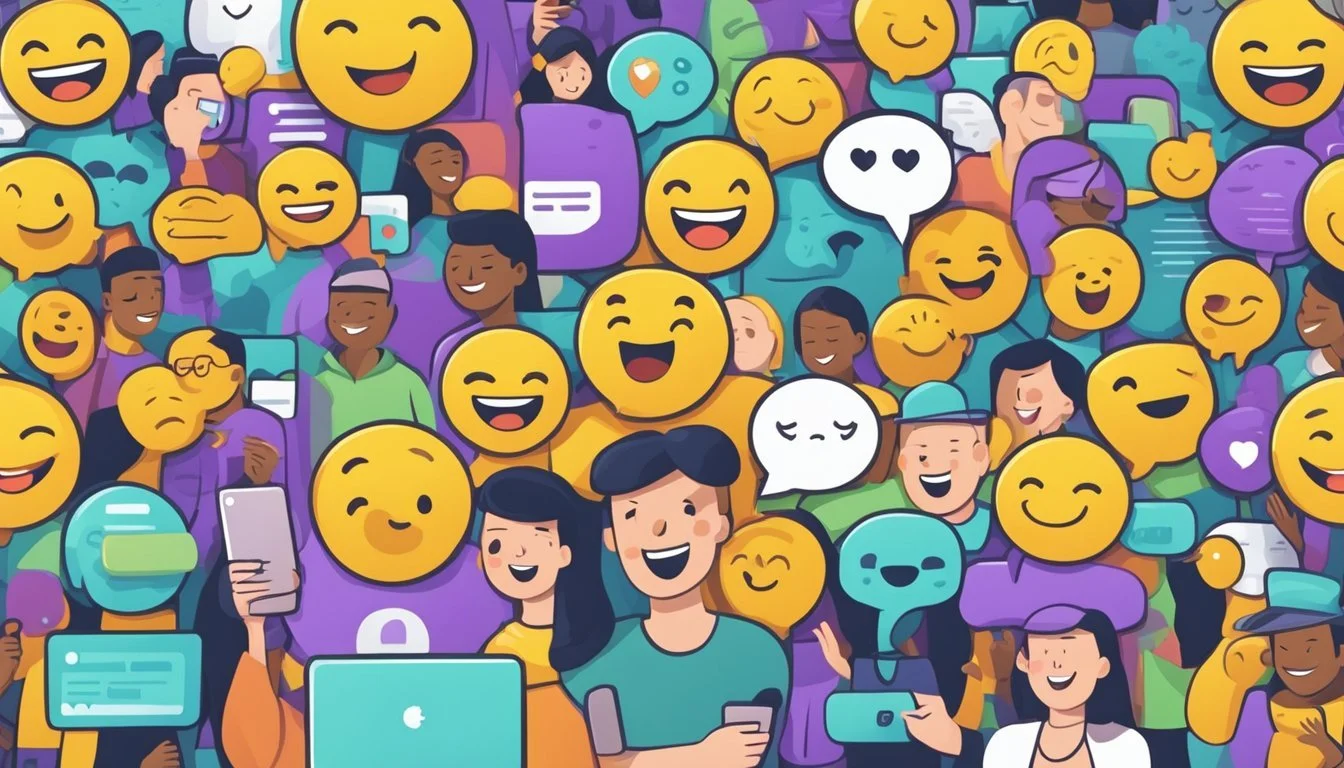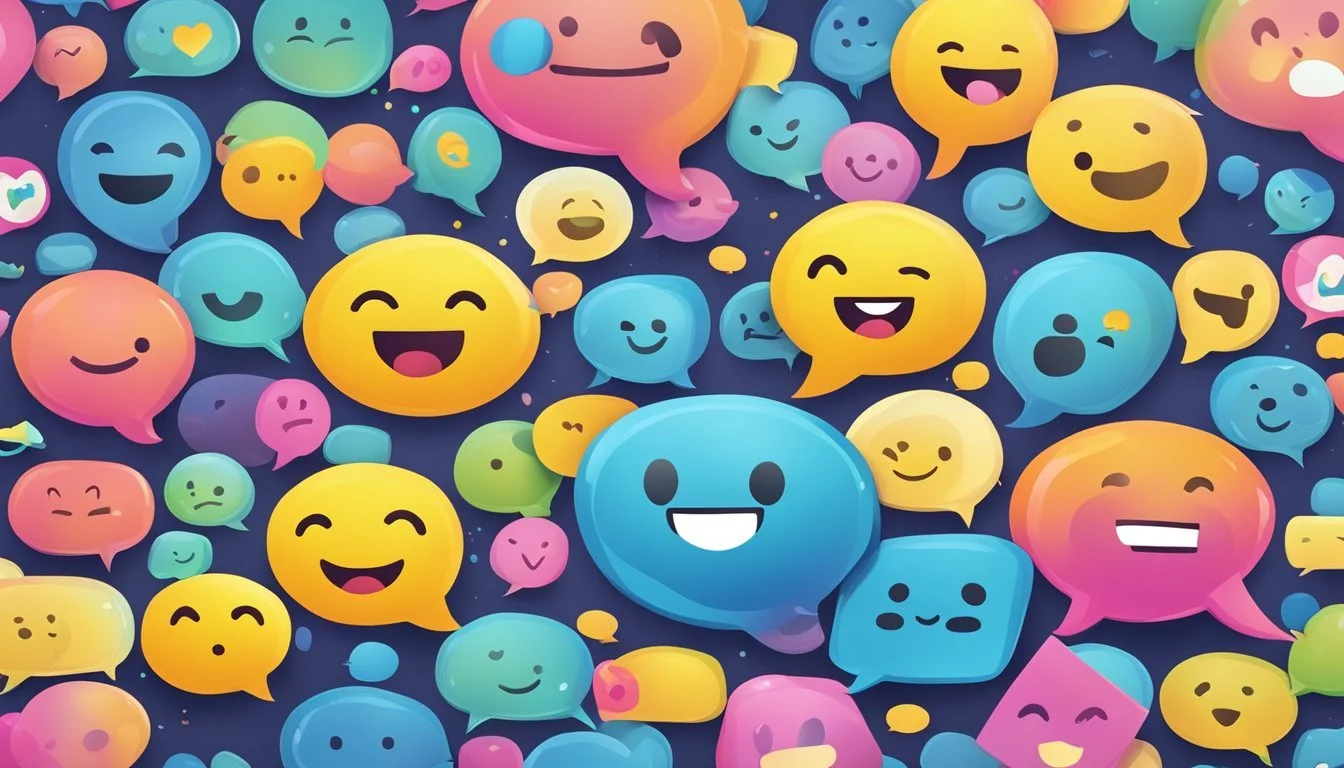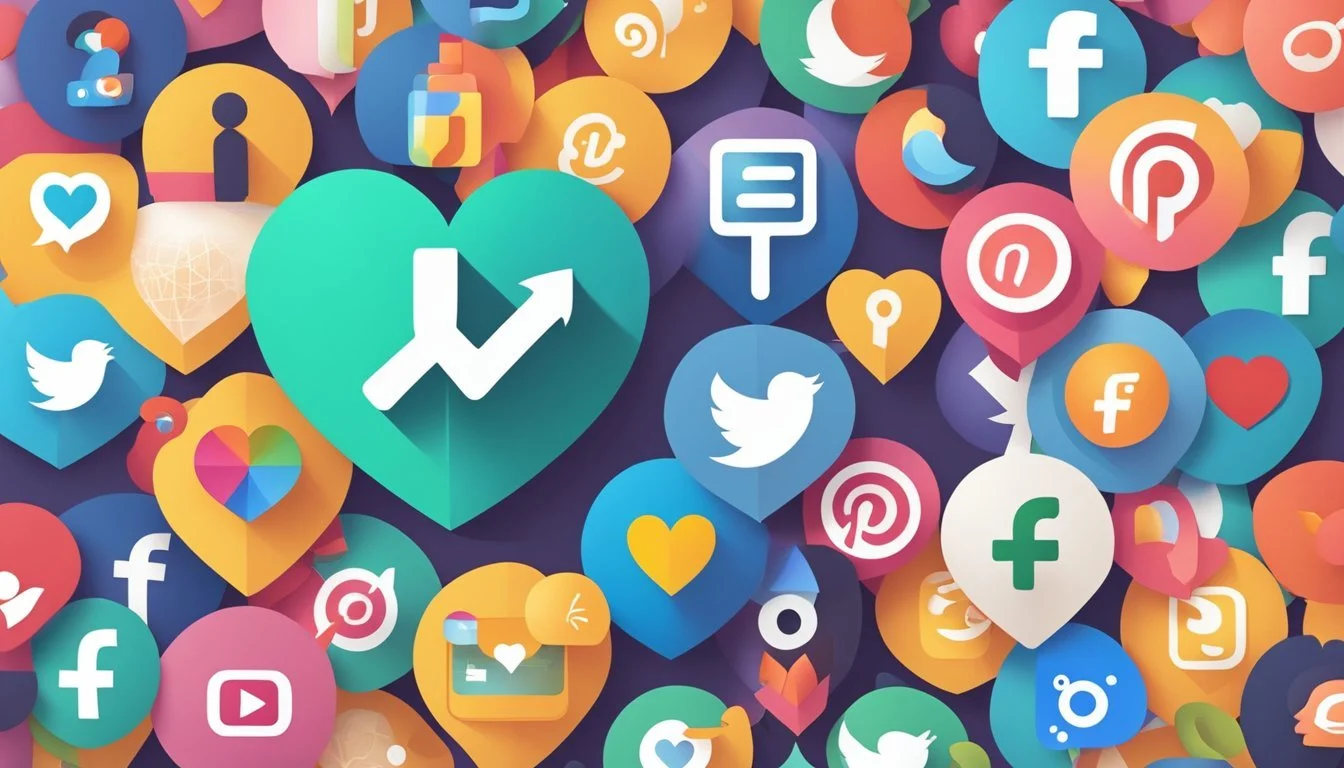8 Ways Social Media Can Strengthen (or Weaken) Your Friendships
A Comprehensive Analysis
In the digital age, social media has become a cornerstone of modern communication, deeply influencing how friendships are formed and maintained. With the rise of platforms like Facebook, Instagram, and Twitter, people can now stay connected with friends and family regardless of geographical barriers. Understanding the dual impact of social media on friendships is essential to navigate these relationships effectively.
While some argue that social media strengthens connections by providing constant communication channels, others believe it creates superficial interactions that lack depth. Studies have shown that these platforms can both bridge gaps and widen them, depending on how they are used. This article explores the nuanced ways social media can either bolster or weaken friendships.
1) Sharing Personal Milestones
Sharing personal milestones such as birthdays, graduations, and job promotions through social media can significantly impact friendships. It allows friends to keep up-to-date with each other's major life events, fostering a sense of connection and inclusion.
These shared moments create opportunities for friends to celebrate together, even if they are miles apart. A quick comment or a "like" can convey support and happiness for a friend's achievements.
However, the visibility of these milestones can also lead to feelings of comparison and envy. Seeing friends' successes online might cause some to feel inadequate or left behind in their own lives.
When shared thoughtfully, these posts can strengthen bonds by keeping friends in the loop about personal achievements. Utilizing platforms like Instagram or Facebook to post about significant moments can be a powerful way to share joy and maintain strong connections with others.
Despite the positive aspects, it's essential to balance the frequency and nature of personal milestone posts to avoid overwhelming friends or appearing boastful. Maintaining authenticity in these shares is key to nurturing genuine friendships.
2) Exchanging Memes and Humor
Sharing memes and humor on social media can be a powerful way to strengthen friendships. Memes often tap into shared cultural references, creating a sense of camaraderie and inside jokes among friends. This simple act of exchanging funny content can lighten the mood and make interactions more enjoyable.
Memes can also serve as conversation starters. When someone sends a meme, it often invites a response or discussion, keeping lines of communication open. This can be particularly valuable in maintaining long-distance friendships, where regular face-to-face interactions aren't possible.
Using humor through memes can also signal empathy and understanding. By sharing a meme that relates to a friend's personal experiences or struggles, it shows attentiveness and provides emotional support. This can deepen the emotional connection between friends.
On the flip side, humor can sometimes be misinterpreted. Not everyone finds the same things amusing, and a poorly chosen meme might offend or confuse. For brands, it's crucial to understand the context of memes to avoid missteps, a point highlighted on Tailwind.
Additionally, memes that resonate widely can influence opinions and behaviors, as discussed by Rebecca Ortiz. Friends may bond over shared beliefs and causes amplified through memes.
In essence, exchanging memes and humor can create stronger bonds and keep friendships vibrant, provided the content is shared with thoughtful consideration.
3) Participating in Group Chats
Group chats can provide a platform for friends to stay connected effortlessly. Regular interaction in these chats allows friends to share updates, photos, and plans, strengthening their bond.
Effective participation requires understanding the dynamics of the group. Engaging with shared content and contributing meaningful messages can make interactions more rewarding for everyone involved.
It is important to maintain etiquette in a group chat. Respecting others' time and keeping messages relevant prevents frustration and keeps the conversation going smoothly. Following the modern etiquette guide can help avoid mishandling group dynamics and maintain harmony.
Moreover, group chats offer a space for collective planning, making it easier to organize events or meetups. This collaborative approach enhances group cohesion. Platforms such as LinkedIn underscore the importance of communication tools in facilitating these interactions.
Nonetheless, group chats can sometimes be overwhelming. Notifications might become disruptive if too frequent. Establishing boundaries and utilizing features like silent notifications can help manage participation without feeling pressured.
Participating in group chats effectively depends on balancing engagement with respect for each member's personal space. This balance can foster stronger, more cohesive friendships. Online resources like Buffer and SocialSelf offer additional strategies for navigating these digital spaces.
4) Organizing Events and Gatherings
Social media can be a powerful tool for organizing events and gatherings. By creating event pages or sending invitations directly, one can easily coordinate details and ensure everyone is informed. This streamlined communication helps avoid misunderstandings and keeps everyone on the same page.
Using social platforms allows for real-time updates about changes in plans or additional instructions. Attendees can quickly respond with their availability or ask questions, making the planning process more efficient.
Official event hashtags can also be useful. A unique, memorable hashtag encourages attendees to share updates and photos, making it easier to track and amplify event-related conversations. This fosters a sense of community and engagement among participants.
Furthermore, integrating interactive elements like polls can help gather instant feedback, enhancing the overall experience. Virtual event organizers often use event polling to improve interaction, as it involves attendees and collects their thoughts and opinions.
In addition to promoting events, social media platforms can increase engagement. Encouraging attendees to share their experiences helps spread awareness and can lead to a higher turnout. Unique storytelling and visual content keep the audience interested and invested in the event.
By leveraging these tools and strategies, organizing events and gatherings can become a seamless and engaging process.
5) Expressing Empathy and Support
Expressing empathy and support on social media can significantly affect the quality of friendships. Engaging in active listening and responding to what friends are sharing demonstrates genuine concern and understanding. This can be as simple as offering words of encouragement or acknowledging their feelings.
Social media users often turn to these platforms to share personal struggles and triumphs. Responding thoughtfully to these posts can help build stronger bonds. For instance, a simple comment, like "I'm here for you," can provide immense emotional support.
Empathy can be showcased by sharing content that resonates with friends' experiences. Posting inspirational stories or resources that might help them can indicate that you're paying attention to their needs. This fosters a deeper connection.
Avoiding negative interactions is equally important. Criticism or insensitive comments can erode trust and lead to strained relationships. Instead, focusing on positive reinforcement and constructive support can nurture friendships.
Social media provides unique opportunities to celebrate each other's milestones. Wishing friends well on their achievements or supporting them during tough times shows that you care. These acts of empathy can strengthen the bonds of friendship.
By consistently expressing empathy and support, social media can become a powerful tool for maintaining and growing meaningful connections. For more insights, check out this blog on empathy on social media.
6) Engaging in Video Calls
Video calls have transformed how individuals connect with friends. Through platforms like Zoom or Facetime, friends can engage in real-time conversations despite geographical distances. This visual communication adds a personal touch that text messages or phone calls cannot replicate.
Seeing facial expressions and body language fosters deeper connections. Shy or introverted friends might find it easier to express themselves. Sharing moments, like virtual dinners or game nights, becomes seamless and enjoyable, enhancing friendships.
On the flip side, video calls demand more attention and time, which can be challenging. Poor internet connections can disrupt conversations, causing frustration. Additionally, some may feel uncomfortable being on camera, leading to feelings of self-consciousness or anxiety.
Despite these drawbacks, integrating video calls into routine communication keeps friendships vibrant and engaging. It's essential to balance and respect each other's comfort levels to maintain a positive and healthy connection.
7) Playing Online Games Together
Playing online games together offers unique opportunities for bonding and communication. These virtual worlds provide platforms for friends to collaborate on missions, complete tasks, and achieve common goals.
Enhanced communication skills can develop in this environment. Players often need to strategize and discuss plans, fostering a sense of teamwork and trust.
Friendships can strengthen as players share experiences and spend time in shared activities. Discovering new game features or achieving high scores can create memorable moments.
Online games can bridge geographical distances, allowing friends in different locations to maintain regular contact. This can be particularly valuable in maintaining long-distance friendships.
Gaming together can introduce players to new social circles. By playing with mutual friends or joining gaming communities, players can expand their social networks.
Balanced gaming helps avoid negative impacts on offline relationships. Moderation ensures that the time spent online complements face-to-face interactions rather than replacing them.
Cultural awareness can increase when players interact with diverse groups online. Gaming communities often bring together people from different backgrounds, promoting understanding and cooperation.
8) Joining Interest-Based Groups
Joining interest-based groups on social media provides a unique way to strengthen friendships. Platforms like Facebook Groups are a goldmine for communities centered around specific interests. Users can search for and join groups related to hobbies such as photography, cooking, or gardening.
These groups allow individuals to connect with others who share the same passions. This fosters deeper connections as members share tips, experiences, and advice. Online discussions often lead to stronger bonds and even offline meetups.
Being active in these groups helps build relationships. Engaging in conversations, responding to posts, and participating in group activities enhances the sense of community. This interaction can turn online acquaintances into close friends.
Interest-based groups are not limited to hobbies. Professional networks and support groups are also prevalent. Joining these groups can offer career advice, emotional support, and a sense of belonging.
Social media platforms also provide tools to create and manage these groups. Customizing group settings and moderating content ensures a safe and focused environment. This encourages positive interactions and helps maintain the group's purpose.
For more details on how to effectively join and participate in interest-based groups, visit the Finding Like-Minded People article.
The Impact of Social Media on Communication
Social media has significantly altered how people communicate, affecting both the quality and nature of interactions. It offers immediate connectivity but often at the cost of meaningful, deep conversations.
Changing Face of Friendships
Friendships have transformed with the rise of social media. Platforms like Facebook and Instagram allow people to maintain large networks of acquaintances and keep up with friends who are geographically distant. Teenagers, for instance, find it easier to form new friendships online, with 64% of them meeting new friends via social platforms.
This online interaction can sometimes be superficial, as it often lacks the depth that face-to-face communication provides. Additionally, the curated nature of social media can create misleading perceptions of friends' lives, potentially leading to feelings of inadequacy. The constant exposure to edited and filtered images can also exacerbate body image issues, affecting the self-esteem and emotional health of users.
Instant Connectivity vs. Deep Conversations
The instant connectivity provided by social media platforms like WhatsApp and Snapchat enables friends to stay in touch effortlessly. This constant availability can create a sense of closeness and support, as friends are just a message away.
On the flip side, this form of communication can hinder deep, meaningful conversations. The brevity and informality of messages often prevent nuanced discussions and emotional connections. The quick, fragmented nature of online communication can even decrease empathy and emotional understanding among individuals. Studies have shown that this can negatively affect friendships and overall mental health, as mentioned in the article discussing the impacts on emotional connection.
Emotional Support in the Digital Age
In the digital age, emotional support is evolving with the rise of social media. It enhances both the ability to express empathy and navigate conflicts online, significantly impacting how people maintain their friendships.
Virtual Empathy
Virtual empathy refers to the expression of understanding and sharing feelings through digital channels. Social media platforms like Facebook and Instagram allow users to react to posts with emojis, comments, and messages, enabling them to offer quick, visible support.
For instance, a person going through a tough time might receive comforting messages from friends, making them feel cared for and less isolated. Moreover, group chats can provide a space for real-time conversations, where friends can offer immediate support and advice.
However, digital communication lacks non-verbal cues such as tone of voice and facial expressions, which can sometimes lead to misunderstandings. Despite this limitation, consistent virtual empathy displayed through balanced, thoughtful responses and regular engagement can strengthen connections between friends.
Navigating Online Conflicts
Navigating conflicts online involves addressing disputes and misunderstandings that arise in digital interactions. On social media, comments and posts are often public, which can escalate conflicts if not handled carefully.
Friends might misinterpret messages due to the absence of non-verbal cues, leading to unnecessary disagreements. To mitigate this, it is advised to discuss sensitive topics through private messages or video calls, where tone and expressions can help convey intent more accurately.
Additionally, social media often amplifies emotions, making conflicts more intense. Being mindful of word choice and taking a moment to cool off before responding can defuse potential arguments. Building the skill to navigate online conflicts effectively is vital to maintaining healthy and resilient friendships.
Maintaining Authentic Relationships
Building authentic relationships on social media requires a strong foundation of transparency and trust, as well as a careful balance between presenting one's true self and the curated perceptions often seen online.
Transparency and Trust
Transparency is crucial for maintaining genuine connections. When individuals are open and honest about their lives, it fosters a sense of trust. Social media often highlights only the best moments, but sharing vulnerabilities can create deeper bonds.
Consistent and genuine communication is key. Responding promptly and engaging in meaningful conversations helps build trust. Ensuring that interactions are not solely surface-level but also touch on personal experiences and feelings can prevent relationships from becoming shallow.
Being transparent also means setting boundaries. Clearly communicating how one uses social media and what they are comfortable sharing are essential. This helps others understand and respect each other's online presence.
Authenticity vs. Perception
Authenticity in social media is about showing one's true self, rather than merely projecting an idealized image. It is important to differentiate between how one perceives themselves and how they present themselves online. Maintaining authenticity can counteract the negative effects of comparisons and insecurities linked to curated content.
Avoiding excessive use of filters and edited images can help in presenting a more realistic portrayal. Friends appreciate genuine, unfiltered interactions that reflect real life.
Sharing real-life moments and thoughts, rather than only highlights, strengthens the connection. It allows friends to see the whole picture, fostering understanding and empathy. Balancing personal narratives with day-to-day updates also creates a relatable and honest online persona.







